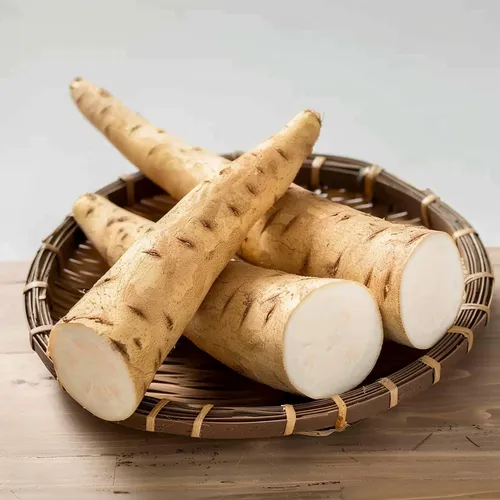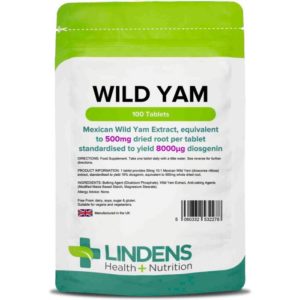For centuries, wild yam has been prized as a natural remedy. Native Americans once used the roots to treat conditions like colic and rheumatism. Though often confused with the orange sweet potato, wild yam is an entirely different plant species used for its healing properties. Let’s explore the potential benefits of this remarkable herb.
What Exactly Is Wild Yam?
Wild yam (Dioscorea villosa) is a perennial vine commonly found in woodlands across North America. It sports heart-shaped leaves and small, greenish-yellow flowers. Of the 600+ Dioscorea species, only about a dozen produce edible tubers or roots.
These thin, starchy roots have a bitter taste – nothing like a sweet potato. The inner flesh is usually white or light in color. While some wild yam varieties are edible, the roots are primarily valued for their medicinal uses. They’re often dried and powdered before being sold as supplements or added to herbal tea blends.
The Hormone Connection
Much of wild yam’s modern appeal stems from a chemical called diosgenin. This plant steroid can be converted in a lab setting into human hormones like progesterone, cortisone, and DHEA. For this reason, wild yam is popularly used to make creams designed to help women manage PMS and menopausal symptoms related to fluctuating hormones.
However, there’s some confusion over how wild yam actually works in the body. While diosgenin can be synthesised into hormones in a lab, the human body can’t perform this conversion on its own. Still, wild yam appears to exert an oestrogen-like effect, which may explain some of its traditional uses.
Potential Benefits of Wild Yam
Easing Menopausal Symptoms
As oestrogen levels drop during menopause, women can experience hot flashes, mood swings, vaginal dryness, and decreased bone density. Hormone replacement therapy is often recommended but may increase cancer and heart disease risks for some.
Wild yam presents a potential natural alternative for managing menopausal symptoms like these. Early research suggests oral wild yam supplements are more effective than topical creams.
Relieving PMS & Menstrual Cramps
That oestrogen-mimicking ability of wild yam may also help soothe premenstrual syndrome (PMS). Herbalists have long recommended wild yam for dysmenorrhea or painful menstrual cramps specifically. It appears to have an anti-spasmodic effect on uterine muscles along with anti-inflammatory properties.
While wild yam was traditionally taken internally for PMS, you’ll now find it in topical progesterone creams aimed at balancing hormones during that time of the month.
Supporting Fertility
Given its hormone-regulating potential, wild yam makes sense as a natural fertility aid too. Optimising oestrogen levels and relaxing the oviducts and fallopian tubes may help improve the chances of conception. Wild yam is often combined with other herbs for this purpose.
Reducing Arthritis Pain & Inflammation
In the past, wild yam earned nicknames like “Rheumatism Root” for its ability to ease rheumatic aches and pains – what we’d now call arthritis. Modern research backs up this traditional use, demonstrating wild yam’s potent anti-inflammatory and analgesic (pain-relieving) effects in lab studies.
Soothing Cramps & Spasms
As an herbal antispasmodic, wild yam may also bring relief from menstrual cramps, uterine cramps during childbirth or postpartum, and general muscle spasms or cramps. Its anti-inflammatory action provides an added pain-relieving benefit.
Supporting Healthy Digestion
Finally, the antispasmodic and anti-inflammatory properties of wild yam extend to the digestive system as well. It may help relax intestinal spasms while stimulating bile production to improve food breakdown and nutrient absorption. For an overall tonic effect on digestion, look for wild yam combined with other bitter herbs and botanicals.
How to Use Wild Yam
You’ll most commonly find wild yam available dried as capsules, tablets, tinctures, extracts, and loose powders or “cut” herb. It’s also a popular ingredient in creams and ointments, especially natural progesterone creams. The fresh roots themselves aren’t usually consumed due to their bitter taste.
Herbal teas offer another way to take advantage of wild yam’s benefits. Since it has an assertive flavour profile, it’s frequently blended with other milder herbs, particularly those with complementary effects on hormone regulation.
Some Precautions with Wild Yam
In general, wild yam is considered safe for both topical and internal use in normal dosages. The most common minor side effects are nausea or stomach upset, typically only with very high doses. However, women with hormone-sensitive conditions like uterine fibroids, endometriosis, or certain cancers may want to avoid wild yam as a precaution. It’s also best to steer clear while pregnant.
The Versatile Wild Yam – An Herbal Ally
From menopausal support to fertility enhancement, joint pain relief to menstrual cramp treatment, wild yam has a diverse array of potential applications – especially for women’s health concerns. If you’re seeking natural hormone balance or anti-inflammatory benefits, give this time-honoured botanical remedy a try. Your body will thank you!
Lindens High Wild Yam Tablets
Lindens is one of the leading suppliers of vitamins and supplements in the UK. Their products are manufactured in Yorkshire and meet the highest quality standards, adhering to ISO 9001 certification for Quality Management Systems. This is why Zoom Health has partnered with Lindens to offer their supplements to our customers.
Lindens Wild Yam Tablets contain an equivalent to 500mg of whole dried root per tablet. Each Mexican Wild Yam (Dioscorea villosa) tablet is standardised to provide 6% diosgenins. The recommended dosage is one tablet daily with water.
Each pack of Lindens Wild Yam Tablets contains 90 tablets, which will last for 90 days when following the suggested once-daily dosage regimen.
Photo “Wild Yam” by Anthony Cunningham for Zoom Health
Zoom Health is a leading UK supplier of Home Health Tests and Earplugs






